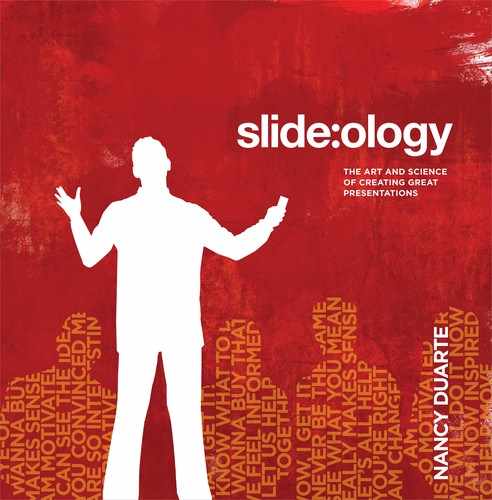
92 slide:ology
Placement of Elements Creates Meaning
Quite possibly, how slides are arranged has the most impact on
whether a slide’s message is visually clear. Arrangement tells a story.
Based on the arrangement decisions a designer makes, a slide can
prompt feelings of tension, confusion, and agitation; conversely, it
can maximize clarity by employing the following:
Contrast
The audience can identify the main point quickly.
Flow
The audience knows the order in which to process the information.
Hierarchy
The audience sees the relationship between elements.
Unity
The audience senses that the information belongs together.
Proximity
The audience perceives meaning from the location of elements.
Whitespace
The audience has visual breathing room.
These are the tools of the slide design trade. It’s tough to assemble
a great slide without paying close attention to each of these issues.
Luckily, these are intuitive concepts that may already be familiar
to you.

Arranging Elements 93
Slides begin and end with ideas. It’s your job to take these invisible,
abstract ideas and determine how they can be best represented in
a tangible, visual form. It’s the presenter’s responsibility to ensure
that the audience is guided through this invisible world by making
ideas easy to decode.
Many presenters don’t understand arrangement as a principle.
They will put everything on one slide and assign them equal value.
It is critical to determine which visual elements should have promi-
nence so they attract attention first.
Create dominance with some elements and practice restraint with
others. Force yourself to make a decision about the priority of the
information.
It’s laziness on the presenter’s part to put every-
thing on one slide.
Overcrowding the slide doesn’t add
to the clarity of the message.
Joe Munroe/Time & Life Pictures/Getty Images
..................Content has been hidden....................
You can't read the all page of ebook, please click here login for view all page.
